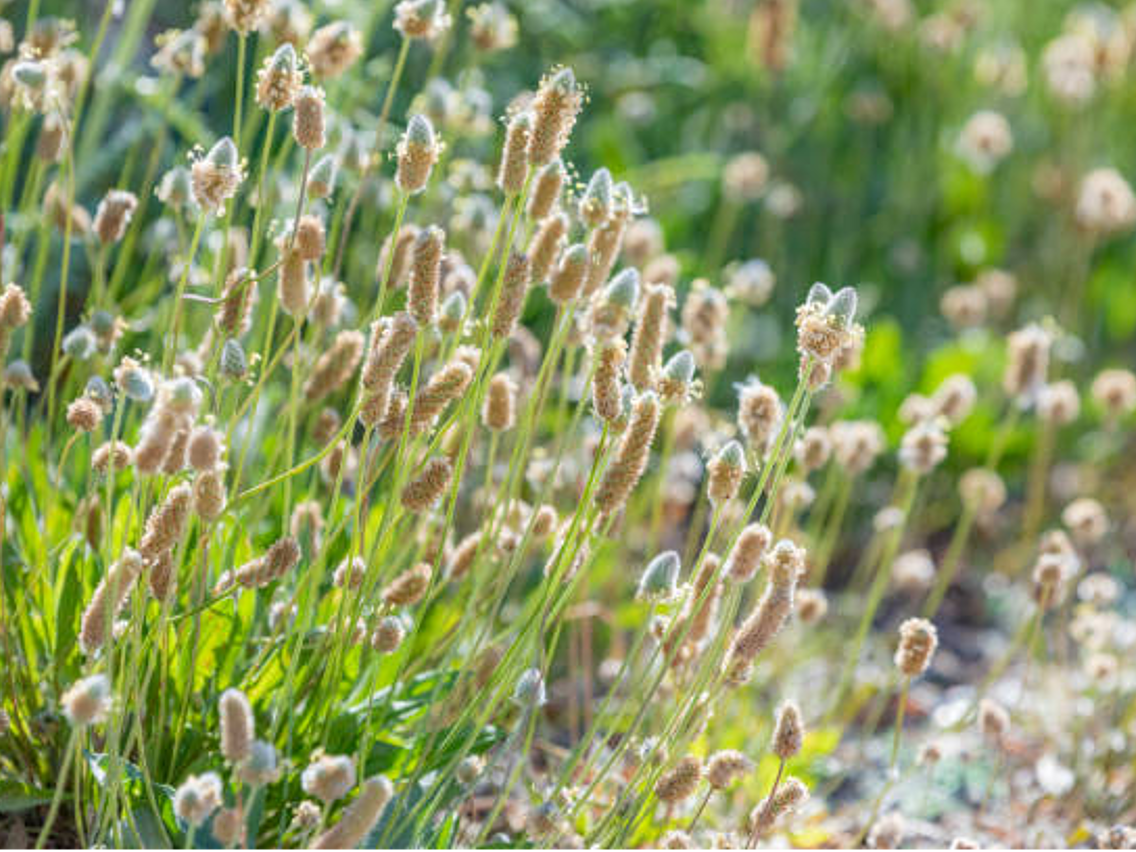Psyllium - Plantago ovata

Common Names: Psyllium, fiber, fiber-loop, flea seed, fleaworth, Indian Plantago, isabgol, ispaggol, ispaghula, ispaghula seed, pale psyllium, Plantago arenaria, Plantago isphagula, Plantago ovata
Latin Name: Plantago ovata
Origin: Africa, Asia, Australia, Europe, South America, North America
Short Introduction
Psyllium grows to harvest readiness in about 119–130 days and is remarkably tolerant of cool, dry weather. Its primary cultivation region is northern Gujarat in India, especially as the so-called Rabi crop or post-monsoon harvest (October to March). During this period, typical temperatures range from 15–30°C with low humidity.
Psyllium requires moderate soil moisture, plenty of sunlight, dry air, and a clean growing environment. Warm nighttime temperatures, heavy cloud cover, or wet conditions near harvest can negatively affect crop quality, while rainfall can disrupt ripening and cause substantial yield loss. The plant prefers light, well-watered, ideally sandy soils.
Psyllium is not nutrient-demanding. In northern Gujarat, soils tend to be low in nitrogen and phosphorus but rich in potassium, with a pH between 7.2–7.9. Trials suggest optimal crop growth with about 22 kg of nitrogen per hectare of farmland.
The seeds are extremely tiny—1,000 psyllium seeds weigh just about 2 grams. Under ideal moisture and temperature conditions (10–20°C), germination rates reach 30–40% within 5–6 days. Some seeds display a dormancy period lasting up to three months, with no current effective methods to break dormancy. Maximum germination is achieved at a soil depth of about 6 mm.
Psyllium requires protection from competing weeds, which it tolerates poorly. Harvest occurs at dawn to prevent dew damage. In India, mature plants are cut about 15 cm from the ground, bundled, and left to dry for several days before threshing and cleaning. Harvested seeds should be dried to 12% moisture and used promptly for future sowing, as seeds older than two years lose viability.
Detailed Description
Psyllium provides the gentlest and most pleasant form of dietary fiber.
Botanical Information
Psyllium (Plantago ovata) is a perennial herb featuring a short rhizome and can grow up to 60 cm tall. It forms a single basal rosette of leaves, measuring 5–25 cm in diameter. The leaves are oblong to ovate, with a slightly blunt tip, a truncate base tapering gently into the petiole. Margins are entire to irregularly toothed, glabrous or slightly hairy. A single plant may produce up to 20 flowering stems, which are prostrate, ascending, or somewhat upright. The elongated flower spikes are cylindrical. The fruit is a capsule, with a separation slit covered by persistent calyx lobes.
Origin and Distribution
Various Plantago species are native throughout Europe except northernmost regions due to unfavorable winters. Their distribution stretches eastwards into Central Asia, northwards to Siberia, into Iran, and northwest Africa. Through human cultivation, Plantago ovata is now spread worldwide. It is native and most widely grown along the Indian Ocean, especially in India.
Usage / Dosage
Psyllium is primarily valued as a dietary supplement due to its high soluble fiber content, which is not absorbed in the small intestine. It absorbs large amounts of water, swelling into a gel that stimulates regular bowel movement. While commonly used as a laxative, psyllium is now broadly recognized as an effective dietary aid for managing constipation as well as mild diarrhea.
Psyllium's soluble fiber absorbs water, softening stools and exhibiting a low risk of causing flatulence compared to other laxatives. Several studies highlight its use in reducing plasma cholesterol as part of a heart-healthy diet, thanks to its soluble fiber. The American Journal of Clinical Nutrition has published numerous articles showing psyllium to be a highly effective and well-tolerated component in routines aimed at lowering mild to moderate hypercholesterolemia. Psyllium’s active compounds are esteemed for reducing elevated blood glucose and cholesterol, which in turn supports healthy blood pressure, improved blood profiles, and long-term cardiac muscle function.
In people with diabetes, psyllium not only lowers blood and lipid levels, it also increases satiety and reduces hunger, supporting better control over food intake—an excellent supplement to healthy diets for managing various conditions.
Psyllium contains five known phenylacetic acid derivatives, which have demonstrated statistically significant anti-inflammatory effects in animal studies investigating inflammatory edema—though these results require further research.
While psyllium itself cannot bind or neutralize gastrointestinal carcinogens, some sources suggest it may help protect the intestinal lining during chemotherapy. Additionally, psyllium supports the normal proliferation and functioning of colon mucosa. It is partially metabolized in the colon into protective butyrates believed to safeguard the intestinal lining against malignant transformation.
True psyllium comes from milling or crushing the outer layer of Plantago ovata seeds. This pure, colorless, and faintly aromatic product is referred to as psyllium husk. It is white, fibrous, highly hydrophilic, and expands as it absorbs water. Psyllium husk is sold both loose and in gelatin capsules (as found in both the US and UK supplement markets).
Health authorities worldwide recognize psyllium as very safe. Allergic reactions are extremely rare. Incorrect use, such as consuming it dry, may cause choking; in such cases, immediate medical assistance is required.
Active Compounds
Psyllium’s primary constituents are polysaccharides (pentoses, hexoses, and uronic acids) comprising about 47% of the soluble content. Other sugars include hemicellulose, arabinose, and xylose. These compounds are non-fermentable and easily digested by the human body. Additional constituents include alkaloids, glycosides, essential oils, and tannins.
Traditional Dosage
For powdered psyllium, take 2 teaspoons (approx. 10 g total) mixed into 100 ml water, twice daily—ideally at least 30 minutes before meals, in the morning and evening. For capsules, adults typically take 2 capsules twice daily with water, tea, or juice, always before meals. For psyllium husk, take 1 teaspoon mixed in 250 ml lukewarm water, morning and evening on an empty stomach. Do not exceed more than 5 teaspoons per day. Whole seeds are taken in the same manner.
